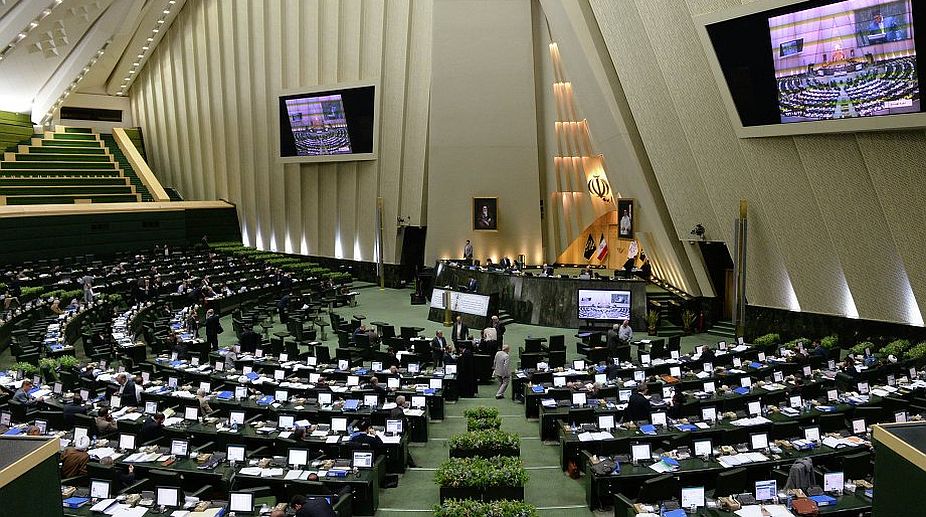Iranian parliament files charges against president
Rouhani for his part accuses the hardliners in parliament of sacrificing national interests for domestic power struggles ahead of the presidential election in June.

Iranian parliament
The Muslim bloc ~ or Europe for that matter ~ is no stranger to outrages perpetrated by ISIS. Yet last week’s s bedlam and butchery in Shi'ite Iran has caused far greater consternation primarily because of its grave implications.
It was a targeted strike on the Iranian parliament (Majlis) and the tomb of the Islamic republic's founder, Ayatollah Ruhollah Khomeini. It may not be wholly coincidental that the mausoleum has been attacked exactly 28 years after Khomenei was laid to rest (6 June 1989).
It has been a lethal rampage on the post-Khomenei legislature and the intra-religion construct. Deeply profound and shocking must be the emotive significance of the calibrated offensive.
Advertisement
The Caliphate has made it painfully obvious that they were targeting two of the most potent symbols of the Revolution of 1979, which led to the overthrow of the Shah.
The apparently coordinated assaults on Tehran, in which 12 people perished, have been blamed by Iran’s hardline Islamic Revolutionary Guard Corps (IRGC) on Saudi Arabia.
The tragedy is bound to have a major impact beyond Iran, igniting tensions with the US, Saudi Arabia and the Sunni monarchies of the Gulf.
The Shia-Sunni conflict, in which is rooted every ISIS offensive, has exacerbated as never before, and it is an ominous trend that it has happened in the holy month of Ramzan, traditionally an occasion in the Middle East for cessation of hostilities. It may not be easy for the average Iranian to recover from the emotional trauma.
Not least because the attack on Khomeini’s tomb is said to be the equivalent of somebody trying to blow up the Lincoln Memorial in Washington. If the ISIS claim of responsibility is confirmed, this will be the first time the group has successfully struck in the heart of Iran, although it has reportedly tried several times in the recent past.
Both from the ideological and military perspectives, ISIS is at war with Iranian forces and its allies in Syria and Iraq. In a video released in March, it vowed to “conquer Iran and restore it to the Sunni Muslim nation as it was before”. The jihadis claim that Iran’s clerical leaders, and their royal Persian predecessors, have persecuted Sunnis for centuries. Is this a contrived effort to interpret the outrage in the historical context?
What we do know is that there is an element of calculated malevolence behind every ISIS strike. The discipline of history need not be trivialised by a purported justification for a bonfire of sanity.
In the immediate perspective, the latest atrocities can be contextualised with the gradual weakening of the Caliphate; Iranian-backed Iraqi and Syrian army forces, plus US and British-backed Kurdish militias, are closing in on Mosul, Raqqa, and Aleppo.
This seems more credible than a strained attempt to reconstruct history
Advertisement